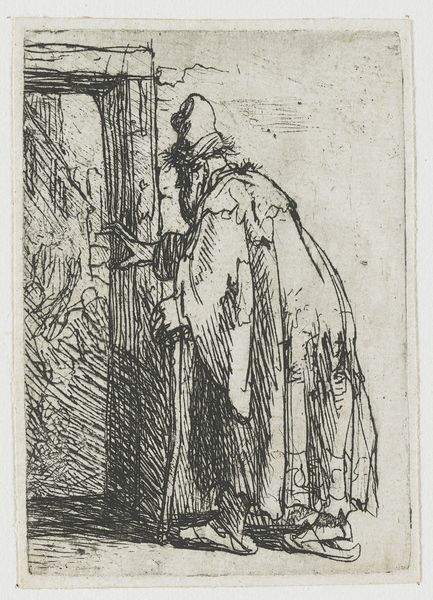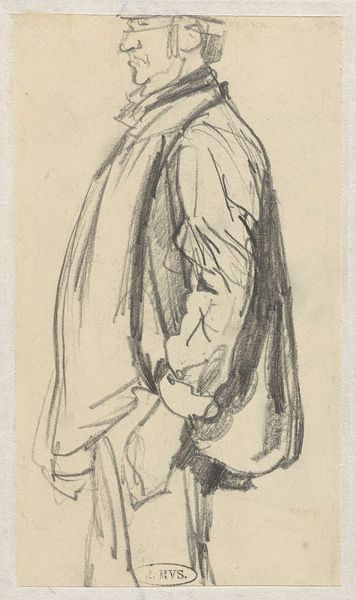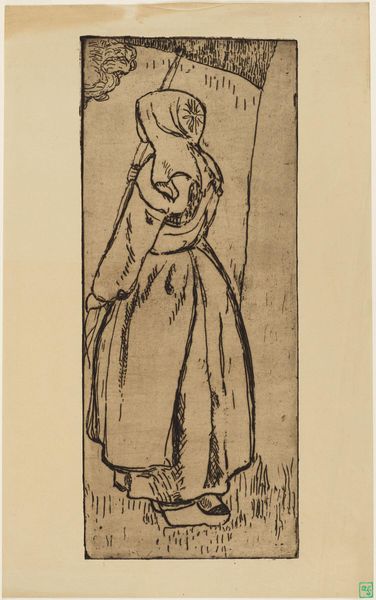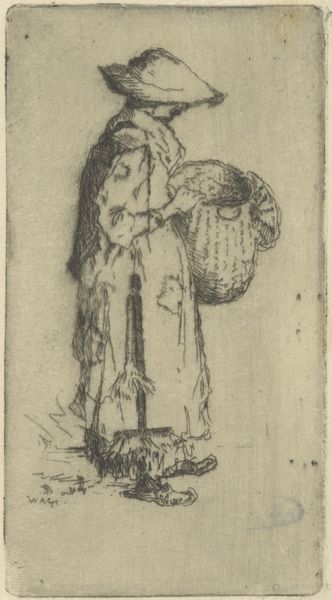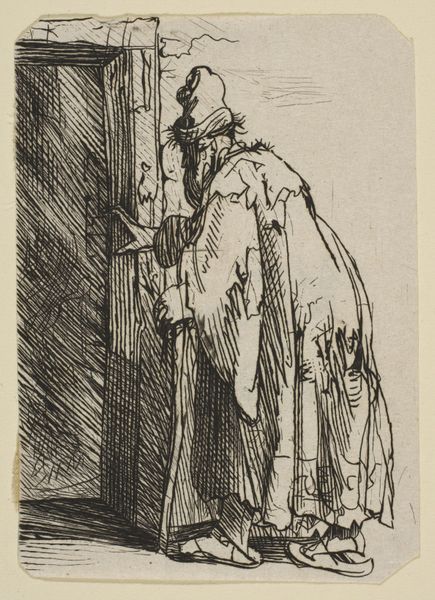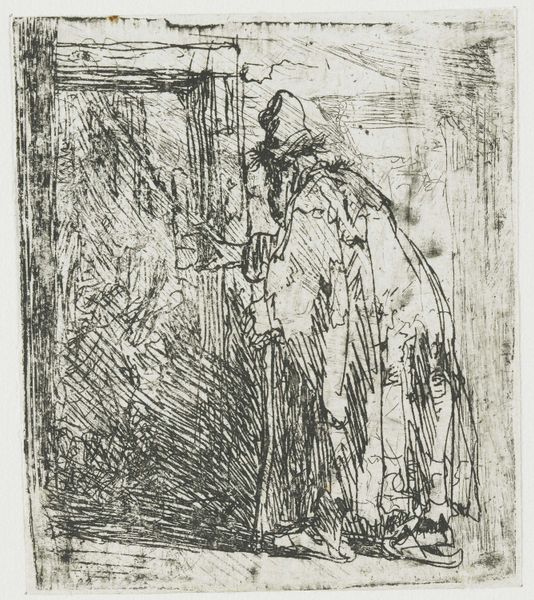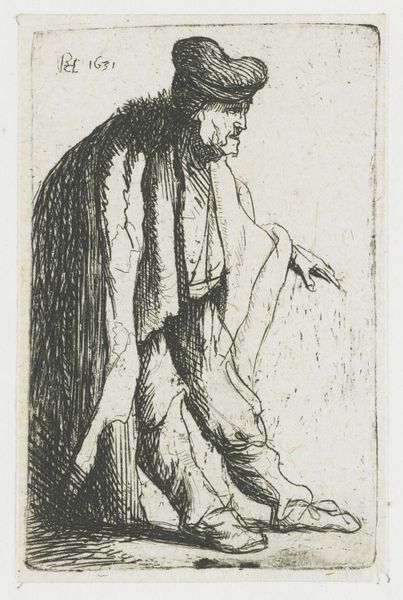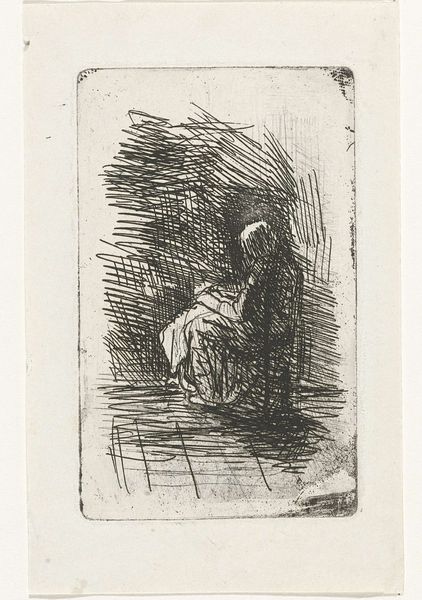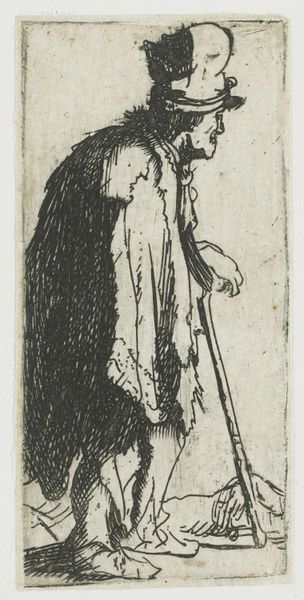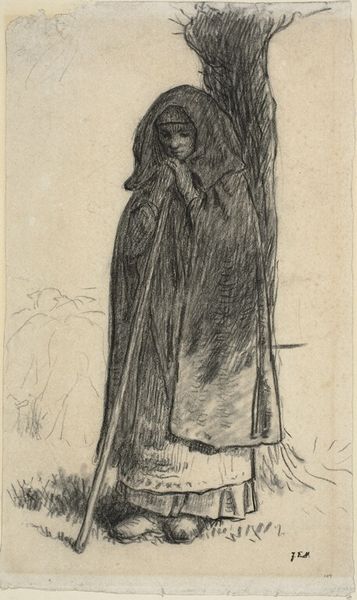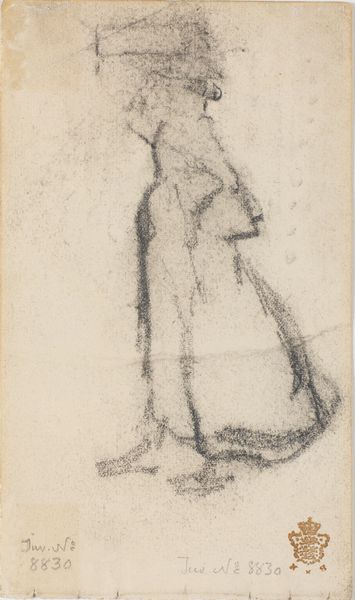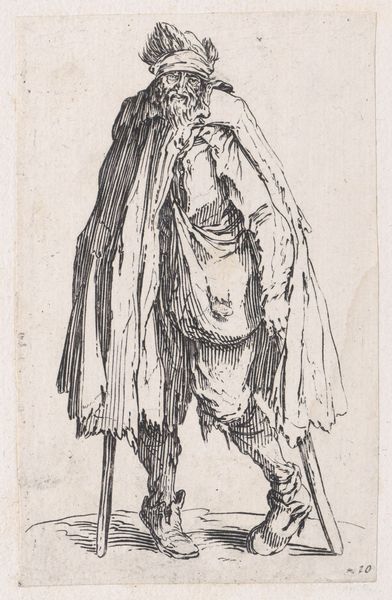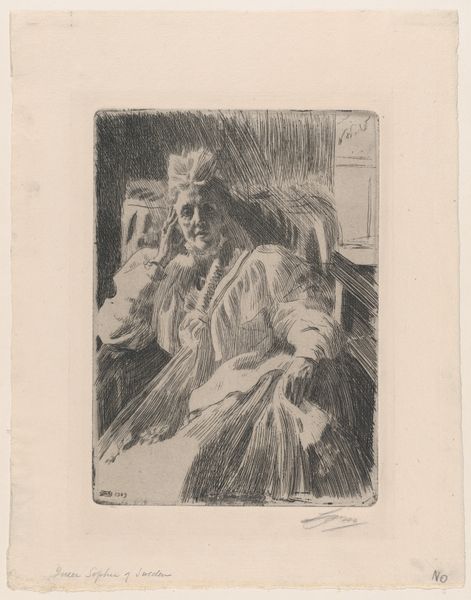
drawing, print, etching
#
portrait
#
drawing
#
narrative-art
#
baroque
# print
#
etching
#
line
Dimensions: height 78 mm, width 55 mm
Copyright: Rijks Museum: Open Domain
Curator: Here we have Rembrandt van Rijn's "The blindness of Tobit: a sketch," created around 1629. It resides here with us at the Rijksmuseum. Editor: My first thought? Intense cross-hatching. It practically vibrates, creating a palpable sense of shadow and texture. The way Rembrandt suggests form with those densely packed lines is remarkable. Curator: Absolutely. As an etching, we're seeing the direct result of Rembrandt’s work with metal, acid, and ink. It’s a fascinating process of creating an image through controlled corrosion and then transferring that image onto paper using a press. And the fact that it is one of several works with the same subject reveals the social importance of biblical scenes. These would have found an eager audience among different classes of collectors. Editor: The subject is interesting. The textures of the materials – the rough wooden door, Tobit's worn clothes – all imply a certain socio-economic context, one of perhaps working class and modest origins. He isn't trying to portray idealized figures; these are clearly "real" people facing everyday struggles, depicted through this accessible method of printmaking, ensuring broader circulation among society. Curator: Precisely. The accessibility is key. Prints like this, relatively inexpensive, played a critical role in disseminating narratives. “The Blindness of Tobit” presents a narrative about perseverance, familial duty and the promise of eventual restoration, providing a compelling message. The social environment shaped both production and viewing patterns for an art like this. Editor: It almost feels subversive, using this 'lower' art form to bring these powerful narratives to the masses, bypassing the traditional channels of patronage and power inherent in painting. One can examine print culture and understand how production changes perception, as its status challenges hierarchical distinctions among genres of art and also contributes to social awareness. Curator: I think that’s a valid point. Consider this piece as existing at a nexus point – bridging elite art culture with broader societal needs. Editor: Yes, a physical embodiment of that liminal space. Well, now I appreciate the interplay between its visual construction and its function within Dutch society so much more. Thanks for illuminating that. Curator: Likewise, the material specificity enriches our grasp of its social importance during the early 17th century. Thank you.
Comments
No comments
Be the first to comment and join the conversation on the ultimate creative platform.
